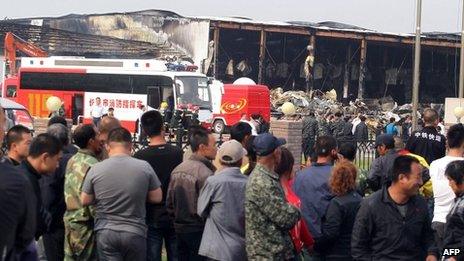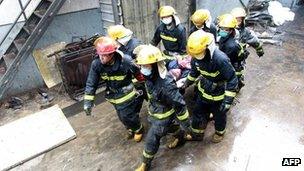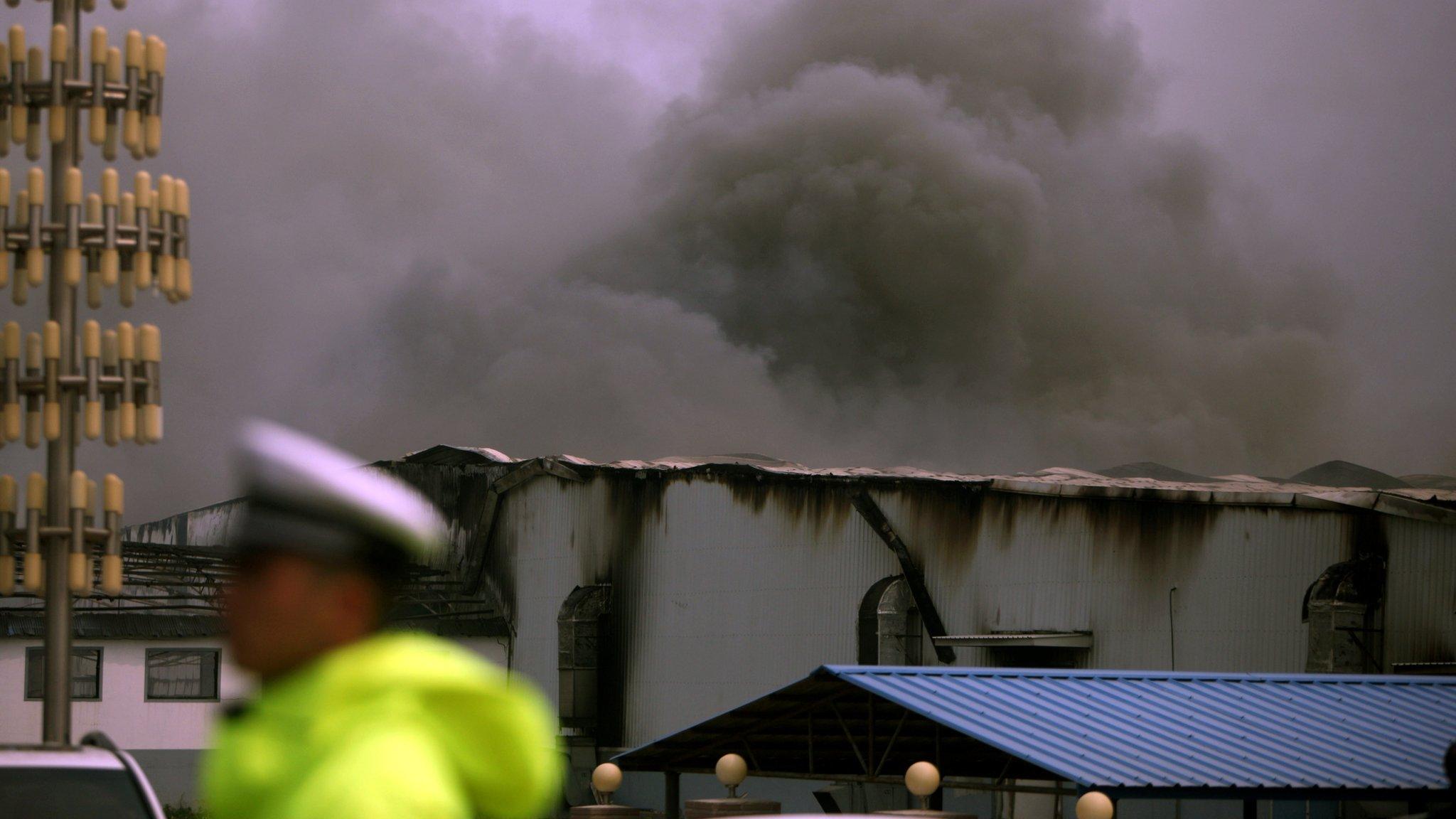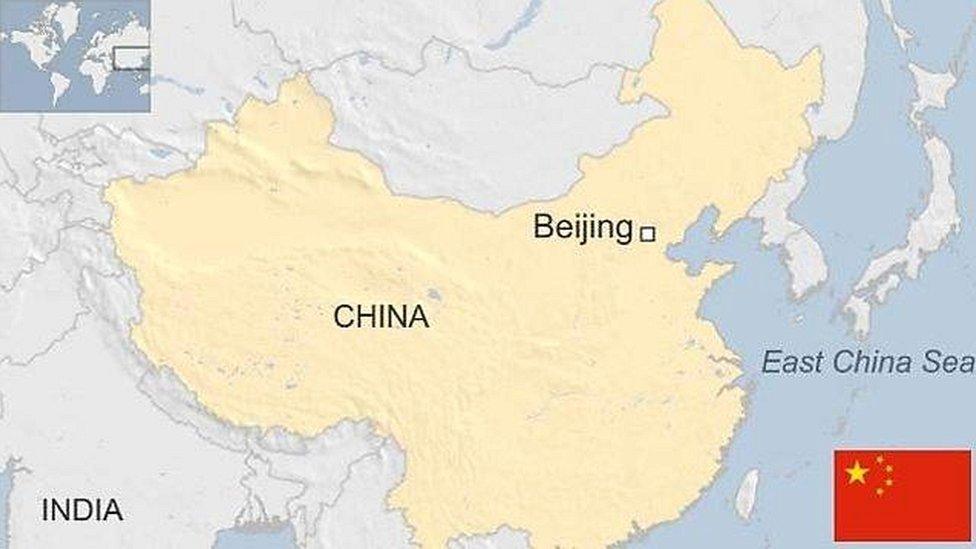China poultry plant fire raises safety standards concerns
- Published

Fire crews have been searching for survivors at the poultry slaughterhouse
The deadly fire at a poultry slaughterhouse in Jilin is China's worst factory blaze in living memory.
The death toll already exceeds that of the fire at a toy factory in Shenzhen in 1993 in which 87 people died, says Geoffrey Crothall, a spokesman for the Hong Kong-based China Labour Bulletin.
"There are cases in the coal mine industry, for example, where more than 100 miners died in an explosion, but the extent of the death toll in this tragedy is very unusual," he said.
China's central government has created thousands of workplace safety regulations ranging from the handling of toxic chemicals to the prevention of occupational illnesses.
However, these laws are often ignored by local authorities that choose instead to focus on boosting economic development.
"It is harder to regulate smaller companies in smaller cities and towns," said Zhao Zhengbing, a lawyer working on health and safety issues with Beijing's Haowei law firm.
Locked exits
The poultry processing plant where the explosions occurred is far away from the chief regulators in China's capital.
The Jilin Baoyuanfeng factory lies in Mishazi, a town just north of Changchun, the capital of China's north-east Jilin province.
Many buildings in China - including factories - are constructed without consideration for health and safety concerns.
Workers who escaped the fire at the Jilin poultry plant say the building's narrow hallways made it difficult to reach the exits.
In an effort to address such problems, China's Communist leaders have created several competing industrial safety organisations.
Their efforts have had some positive results - workplace accidents have dropped more than 33% in the past five years, according to comments made in January by China's then Vice Premier Zhang Dejiang.

Fires at sites like the Jilin plant are on the rise
The death toll from those accidents has also dropped, down more than 29%.
However, fire accidents at construction sites and agricultural production factories like the Jilin poultry slaughterhouse are on the rise, according to the most recent data available from China's Public Security Bureau.
In 2011, China recorded more than 125,400 fire accidents which killed more than 1,100 people: The fires caused $335m (£219m) in economic losses.
The Public Security Bureau notes that fires on construction sites rose in 2011, up 5.7% from the year before. Similarly, the number of fires in agricultural factories increased by 8.9% from 2010.
Factory bosses failed to obey safety procedures, using heat sources and electricity in unsafe ways, said the Public Security Bureau.
Experts say the incident in Jilin highlights the lack of fire prevention equipment or fire safety training available to Chinese workers.
"Over the past 10 years there has been some improvement [in accident prevention], although there is certainly no real culture of safety in Chinese workplaces," said Mr Crothall.
"Safety, unfortunately, still comes second to productivity and profits. There are, unfortunately, deaths at coal mines and factories pretty much every day, but no-one pays attention when it is one or two people."
Critics argue that factory bosses are rarely punished for workplace accidents, removing an incentive to implement regulations more strictly.
The latest accident has so far not generated a great deal of interest on Weibo, China's version of Twitter.
Without public pressure to crack down on the Jilin factory bosses, it is unlikely that significant changes will be implemented in Jilin, or indeed, across the rest of China.
- Published3 June 2013

- Published25 August 2023

- Published3 June 2013
- Published17 November 2010
- Published15 November 2010